A Novel Treatment Strategy in the Setting of Heart Block or Cardiac Arrest Secondly to Coronary Artery Spasm?
Jiang Y. Wang*, Xi Su, Chen W. Liu, Chen YiXu, Zhi P. Zhang, Dan Song, Jian Peng and Hua Yan
Department of cardiology, Wuhan Asia heart hospital, Wuhan, China
*Address for Correspondence: Xi Su, Department of Cardiology, Wuhan Asia heart hospital, Wuhan 430022, China; Tel: +8615172496706; E-mail: [email protected]
Submitted: 05 May 2017; Approved: 12 May 2017; Published: 16 May 2017
Citation this article: Su X, Wang JY, Liu CW, YiXu C, Zhang ZP, et al. A Novel Treatment Strategy in the Setting of Heart Block or Cardiac Arrest Secondly to Coronary Artery Spasm. Int J Cardiovasc Dis Diagn. 2017;2(1): 008-010.
Copyright: © 2017 Su X, et al. This is an open access article distributed under the Creative Commons Attribution License, which permits unrestricted use, distribution, and reproduction in any medium, provided the original work is properly cited
Download Fulltext PDF
Coronary artery vasospasm is not yet completely clarified. CAS can lead to sudden cardiac death due to ventricular Coronary Artery Spasm (CAS) is not an uncommon event, but its pathophysiologic mechanisms followed by arrhythmias or heart block. Diltiazem is a core of drugs for the treatment of CAS, but in the setting of heart block or cardiac arrest, administration of the diltiazem may be associated with aggravated heart block or cardiogenic shock. We report a 78-year-oldman who had a complete atrioventricular block with ST-segment elevation and a witnessed cardiac arrest with ventricular tachycardia / ventricular fibrillation, which could not be controlled effectively by defibrillations and positive inotropic action drugs. Emergency coronary angiography revealed that the right coronary artery systems diffuse spasm. We timely adjusted the treatment strategy, and the ventricular tachycardia was successfully terminated by administration of intravenous diltiazem.
Introduction
Coronary Artery Spasm (CAS) is not an uncommon event, but its pathophysiologic mechanisms followed by coronary artery vasospasm are not yet completely clarified. Coronary endothelial dysfunction and a variety of nonspecific vasoconstrictive stimuli factors such as α-adrenergic stimulation, β-adrenergic blockade, and altered sympathovagal balance could be the main causes of coronary artery spasm [1-2]. Patients with coronary artery spasm typically describe chest pain symptoms, usually occurring in the early hours of the morning with ST - segment elevation on Electrocardiogram (ECG). In severe cases, CAS associated arrhythmias may be present ranging from heart block to ventricular tachycardia or cardiac arrest [3]. In the process of cardiopulmonary resuscitation, using large dose of vasoactive drugs might deteriorate CAS. Diltiazem is a core of drugs for the treatment of CAS, but in the setting of heart block or cardiac arrest, administration of the diltiazem may be associated with aggravated heart block or cardiogenic shock [4]. On the surface, in the setting of heart block or cardiac arrest, administration of the diltiazem may be existentially contradictory. But in the setting of heart block or cardiac arrest secondly to CAS, the outcome will be completely different.
Case Presentation
A 78-year-old man with a medical history of hypertension presented to the emergency department of Wuhan Asia heart hospital with a recent onset of intermittent chest pain. Electrocardiography (Figure 1A) and transthoracic immediately, and the ventricular tachycardia was terminated for a while at first, but subsequently, recurrent incessant episodes of ventricular fibrillations were developed, and the patient was required continuous chest compressions, tracheal intubation, and intravenous epinephrine. Because the patient’s hemodynamic status continued to worsen, an intra-aortic balloon pump was inserted immediately. Emergency coronary angiography revealed that the entire right coronary artery systems diffuse spasm (Figure 2A). The patient’s right coronary artery had a certain improvement by administration of repeatedly intracoronary boluses of nitroglycerin 600ug (Figure 2B). While in the cardiac care unit, a recurrent ventricular tachycardia was terminated by administration of intravenous diltiazem 8 mg (Figure 1D). Since then, no significant ventricular arrhythmias happened anymore with intravenous diltiazem maintenance treatment (Figure 1E). He did not develop heart failure throughout his hospital stay. Seven days later, her follow-up echocardiogram revealed improvement of the ejection fraction to 50%.
Discussion
CAS is not an uncommon event, but its pathophysiologic mechanisms followed by coronary artery vasospasm are not yet completely clarified. Coronary endothelial dysfunction and a variety of nonspecific vasoconstrictive stimuli factors such as α-adrenergic stimulation, β-adrenergic blockade, and altered sympathovagal balance could be the main causes of coronary artery spasm [1-2]. Patients with coronary artery spasm typically describe chest pain symptoms, usually occurring in the early hours of the morning with ST-segment elevation on ECG. In severe cases, such as multivessel coronary artery spasm associated arrhythmias may be present ranging from heart block to ventricular tachycardia [3]. If it had not promptly diagnosed and treated, coronary artery spasm might result in myocardial infarction with life-threatening consequences. Clinically, coronary artery spasm may be discovered through the change in ECG, hemodynamic instability, arrhythmia, circulatory collapse, or cardiac arrest. Echocardiography may show new segmental wall motion abnormalities. However, the exact diagnosis of coronary artery spasm can be achieved only by coronary angiography. Once continuous hemodynamic deterioration secondary to coronary artery spasm is detected, treatment is extremely difficult. The vasoconstrictive and positive inotropic drugs will aggravate coronary artery spasm. On the other hand, the administration of intravenous coronary vasodilators such as nitroglycerin and calcium antagonists may exacerbate hemodynamic deterioration when complicated with cardiogenic shock.
In our case, during the cardiopulmonary arrest, we had used large doses of intravenous epinephrine before emergency coronary angiography, so that the recovery had been becoming very difficult. After emergency coronary angiography, we concluded that the heart block and cardiac arrest may be caused by right coronary artery spasm. So, we timely adjusted the treatment strategy with administration of intravenous diltiazem even under the circumstances of complete atrioventricular block or cardiac arrest. This case is an eventually successful resuscitation thanks to the diltiazem, which improved myocardial blood supply from the cause. Diltiazem is a core of drugs for the treatment of CAS, but in the setting of heart block or cardiac arrest, administration of the diltiazem may be associated with aggravated heart block or cardiogenic shock [4]. On the surface, in the setting of heart block or cardiac arrest, administration of the diltiazem may be existentially contradictory. But in the setting of heart block or cardiac arrest secondly to CAS, the outcome will be completely different. Although it has a modest negative inotropic effect and inhibits impulse conduction within the sinoatrial and atrioventricular nodes, it also relaxes coronary smooth muscle and produces coronary vasodilation, which in turn improves myocardial oxygen delivery.
From this case, we hold opinion that epinephrine could exacerbate the coronary artery spasm during cardiopulmonary resuscitation; however, diltiazem could relief the CAS, with the purpose of prevent the episodes of ventricular arrhythmias or heart block or cardiac arrest. So, we think that use of intravenous diltiazem in the conditions of heart block or cardiac arrest induced by CAS is not an absolute contraindication. This discovery provides direct evidence for a novel treatment strategy in the setting of heart block or cardiac arrest secondly to CAS.
Conflict of interest
The authors declare that there are no conflicts of interest.
- Saw J. Spontaneous coronary artery dissection. Can J Cardiol 2013; 29: 1027-1033. https://goo.gl/WBCIIx
- Alfonso F. Spontaneous coronary artery dissection: new insights from the tip of the iceberg? Circulation 2012; 126: 667-670. https://goo.gl/kGte70
- Alfonso F, Bastante T. Spontaneous coronary artery dissection: novel diagnostic insights from large series of patients. CircCardiovascInterv 2014; 7: 638-641. https://goo.gl/oeF3Kw
- Saw J, Aymong E, Sedlak T, BullerCE, Starovoytov A, Ricci D, et al. Spontaneous coronary artery dissection: association with predisposing arteriopathies and precipitating stressors and cardiovascular outcomes. CircCardiovascInterv 2014; 7: 645-655. https://goo.gl/7qUGcG
- Vanzetto G, Berger-Coz E, Barone-Rochette G, Chavanon O, BouvaistH, Hacini R, et al. Prevalence, therapeutic management and medium-term prognosis of spontaneous coronary artery dissection: results from a database of 11,605 patients. Eur J CardiothoracSurg 2009; 35: 250-254. https://goo.gl/P150Zs
- Yip A, Saw J. Spontaneous coronary artery dissection - a review. CardiovascDiagnTher2015; 5: 37-48. https://goo.gl/JqV0X0
- Tweet MS, Hayes SN, Pitta SR, Simari RD, Lerman A, Lennon RJ, et al. Clinical features, management, and prognosis of spontaneous coronary artery dissection. Circulation 2012; 126: 579-588. https://goo.gl/4t0sLp
- Asuncion CM, Hyun J. Dissecting intramural hematoma of the coronary artery in pregnancy and the puerperium. ObstetGynecol 1972; 40: 202-210. https://goo.gl/gxY18x
- Heefner WA. Dissecting hematoma of the coronary artery. A possible complication of oral contraceptive therapy. JAMA 1973; 223: 550-551. https://goo.gl/W8eA5s
- Paulo M, Sandoval J, Lennie V, Dutary J, Medina M, Gonzalo N, et al. Combined use of OCT and IVUS in spontaneous coronary artery dissection. JACC Cardiovasc Imaging 2013; 6: 830-832. https://goo.gl/xYv9Zw
- Auer J, Punzengruber C, Berent R, Weber T, Lamm G, Hartl P, et al. Spontaneous coronary artery dissection involving the left main stem: assessment by intravascular ultrasound. Heart 2004; 90: e39. https://goo.gl/baATW1
- Shamloo BK, Chintala RS, Nasur A, Ghazvini M, Shariat P, Diggs JA, et al. Spontaneous coronary artery dissection, aggressive vs. conservative therapy. J Invasive Cardiol 2010; 22: 222–228. https://goo.gl/rhCCiu
- Epstein AE, DiMarco JP, Ellenbogen KA, Estes NA 3rd, Freedman RA, Gettes LS, et al. American College of Cardiology Foundation; American Heart Association Task Force on Practice Guidelines; Heart Rhythm Society. American College of Cardiology Foundation; American Heart Association Task Force on Practice Guidelines; Heart Rhythm Society 2012 ACCF/AHA/HRS focused update incorporated into the ACCF/AHA/HRS 2008 guidelines for device-based therapy of cardiac rhythm abnormalities: a report of the American College of Cardiology Foundation/American Heart Association Task Force on Practice Guidelines and the Heart Rhythm Society. J Am CollCardiol 2013; 61: e6-e75. https://goo.gl/GKOPg6
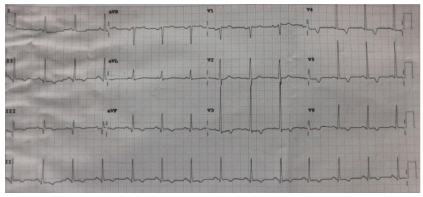
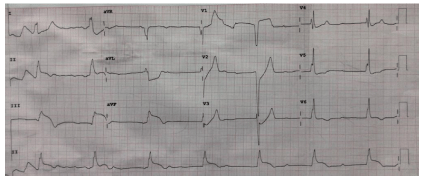
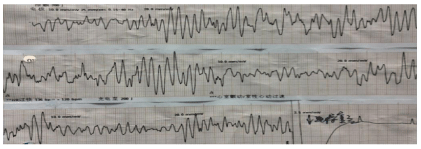
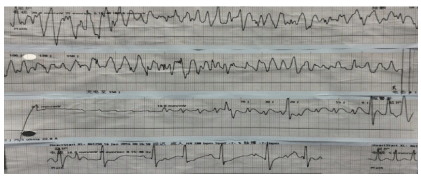
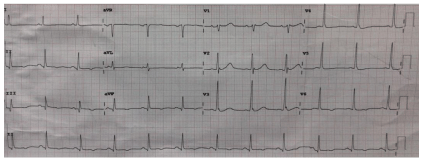
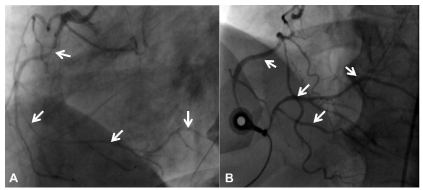

Sign up for Article Alerts